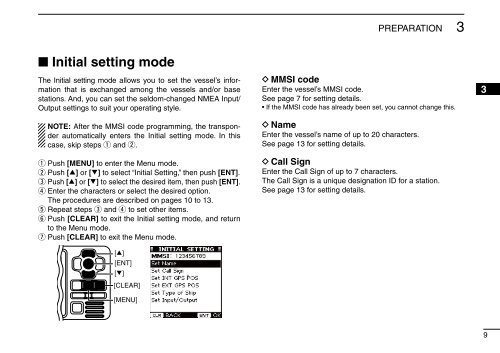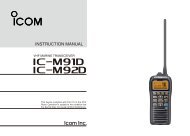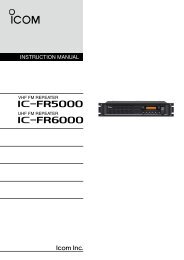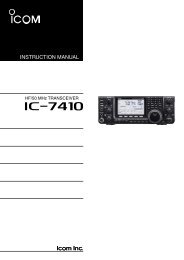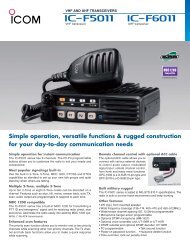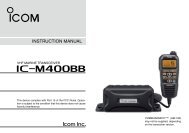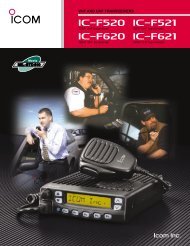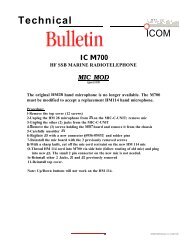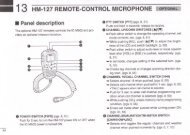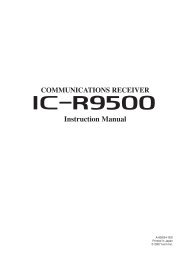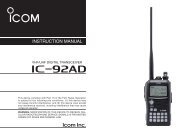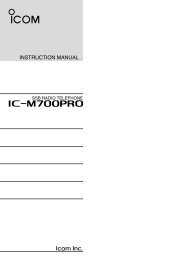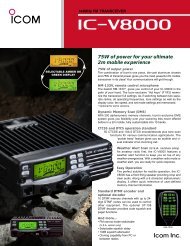MA-500TR Instruction Manual - ICOM Canada
MA-500TR Instruction Manual - ICOM Canada
MA-500TR Instruction Manual - ICOM Canada
You also want an ePaper? Increase the reach of your titles
YUMPU automatically turns print PDFs into web optimized ePapers that Google loves.
PREPARATION<br />
3<br />
■ Initial setting mode<br />
The Initial setting mode allows you to set the vessel’s information<br />
that is exchanged among the vessels and/or base<br />
stations. And, you can set the seldom-changed NMEA Input/<br />
Output settings to suit your operating style.<br />
NOTE: After the MMSI code programming, the transponder<br />
automatically enters the Initial setting mode. In this<br />
case, skip steps q and w.<br />
q Push [MENU] to enter the Menu mode.<br />
w Push [∫] or [√] to select “Initial Setting,” then push [ENT].<br />
e Push [∫] or [√] to select the desired item, then push [ENT].<br />
r Enter the characters or select the desired option.<br />
The procedures are described on pages 10 to 13.<br />
t Repeat steps e and r to set other items.<br />
y Push [CLEAR] to exit the Initial setting mode, and return<br />
to the Menu mode.<br />
u Push [CLEAR] to exit the Menu mode.<br />
[∫]<br />
[ENT]<br />
[√]<br />
[CLEAR]<br />
[MENU]<br />
D MMSI code<br />
Enter the vessel’s MMSI code.<br />
See page 7 for setting details.<br />
• If the MMSI code has already been set, you cannot change this.<br />
D Name<br />
Enter the vessel’s name of up to 20 characters.<br />
See page 13 for setting details.<br />
D Call Sign<br />
Enter the Call Sign of up to 7 characters.<br />
The Call Sign is a unique designation ID for a station.<br />
See page 13 for setting details.<br />
1<br />
2<br />
3<br />
4<br />
5<br />
6<br />
7<br />
8<br />
9<br />
10<br />
11<br />
12<br />
13<br />
14<br />
15<br />
16<br />
9


